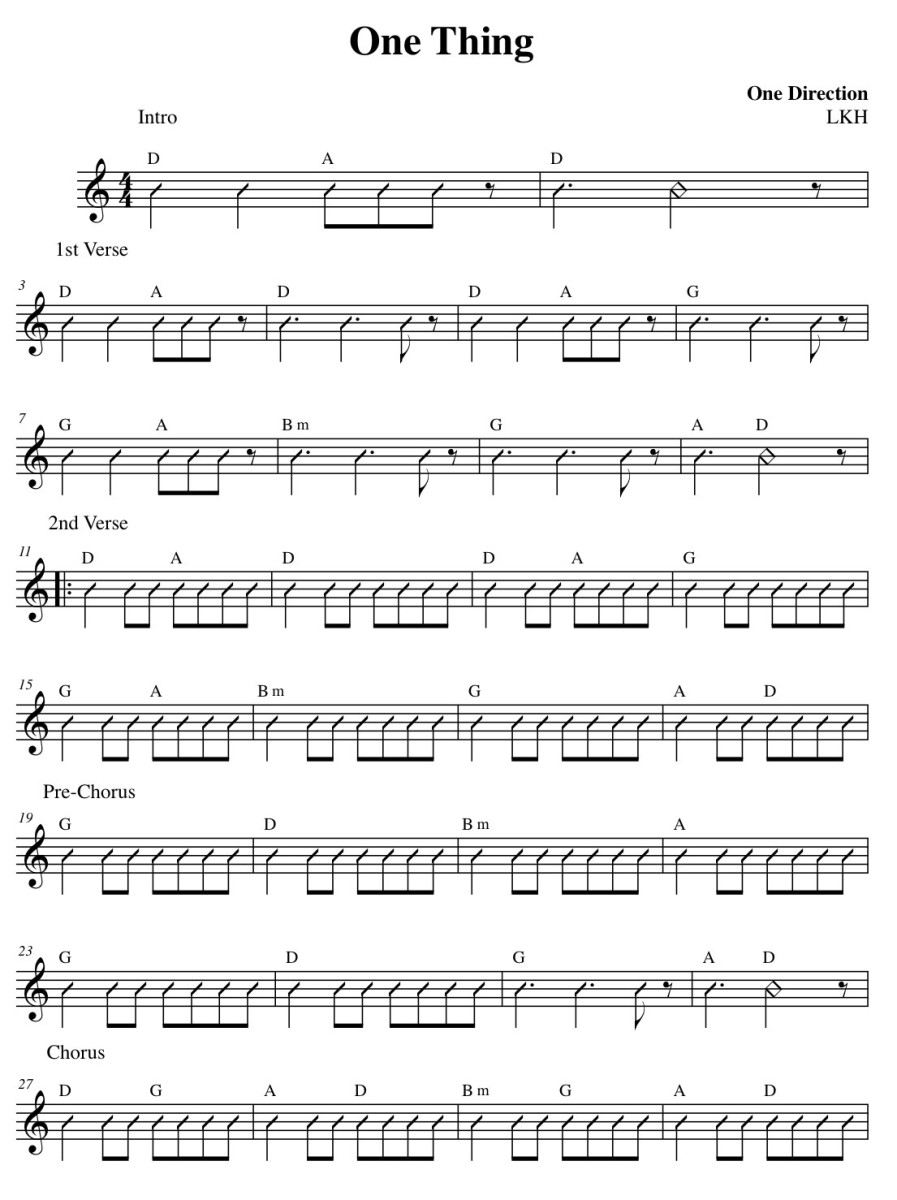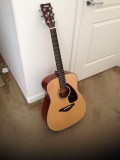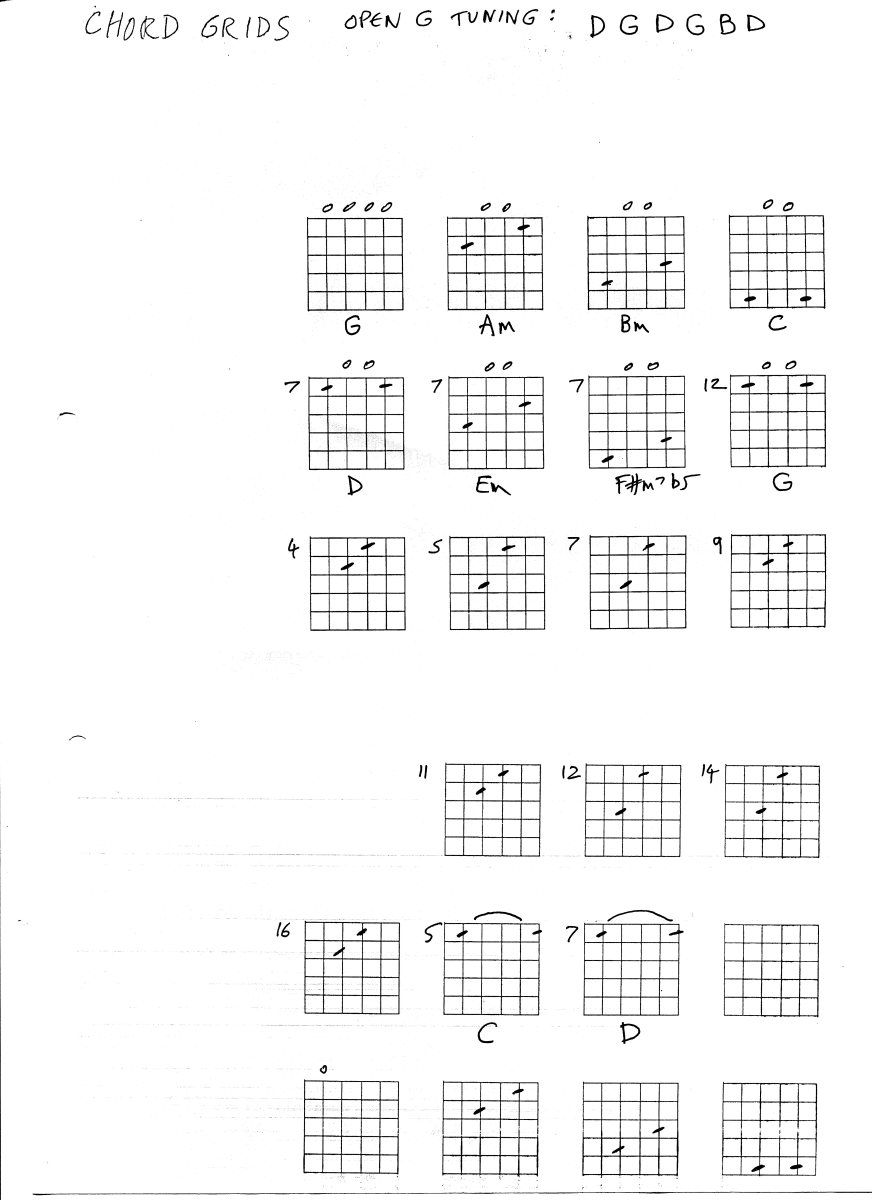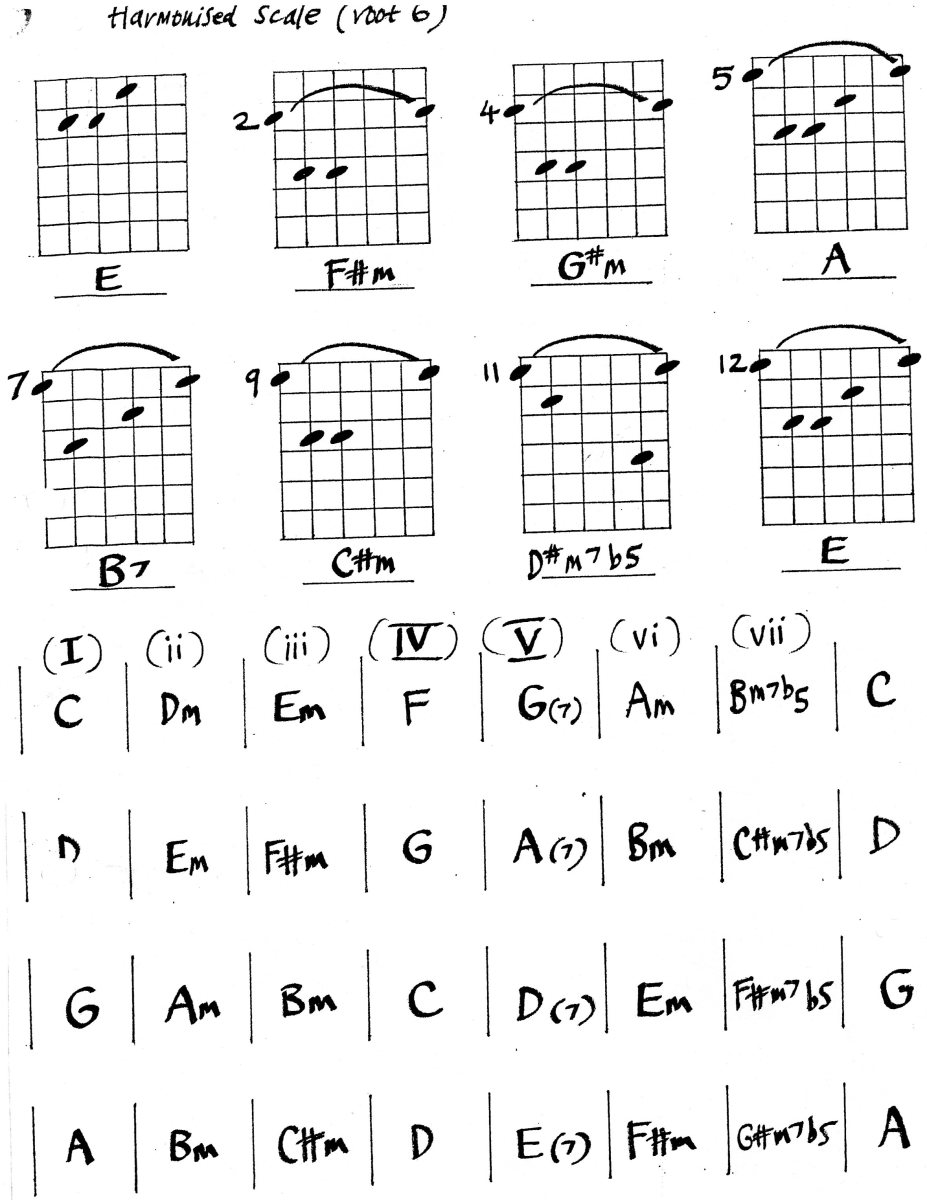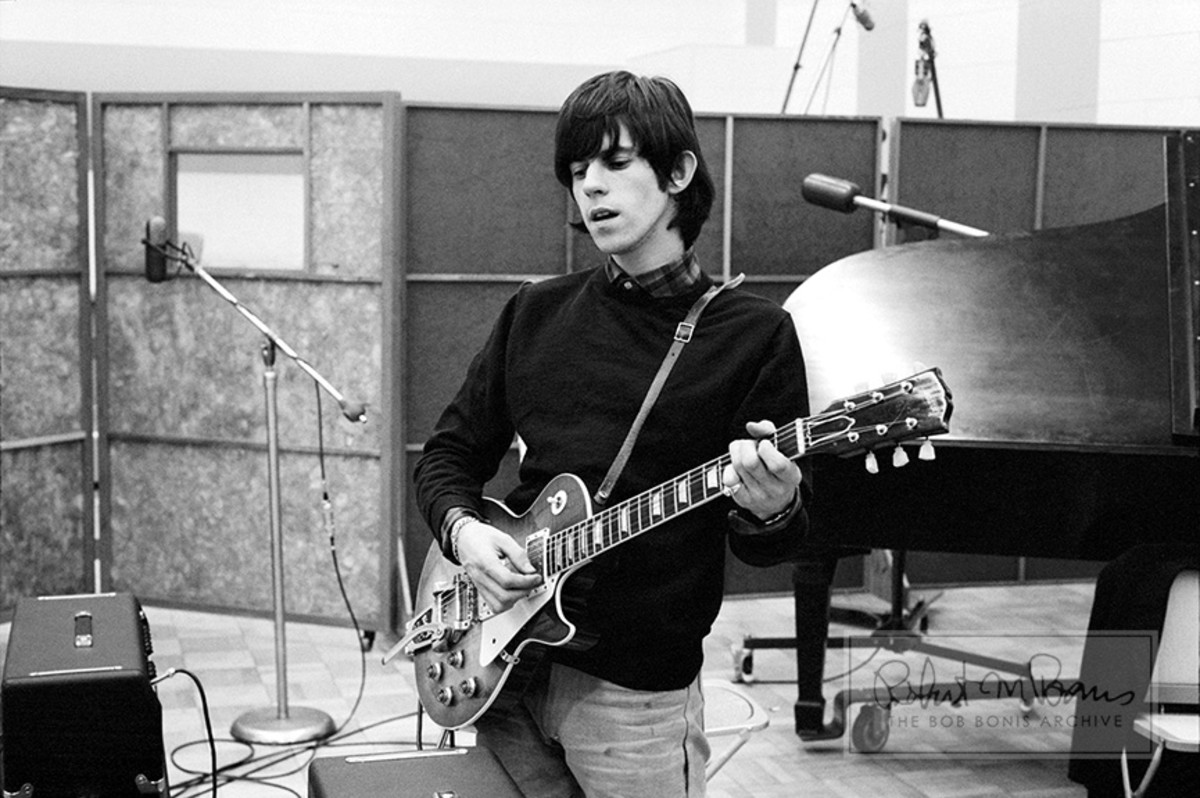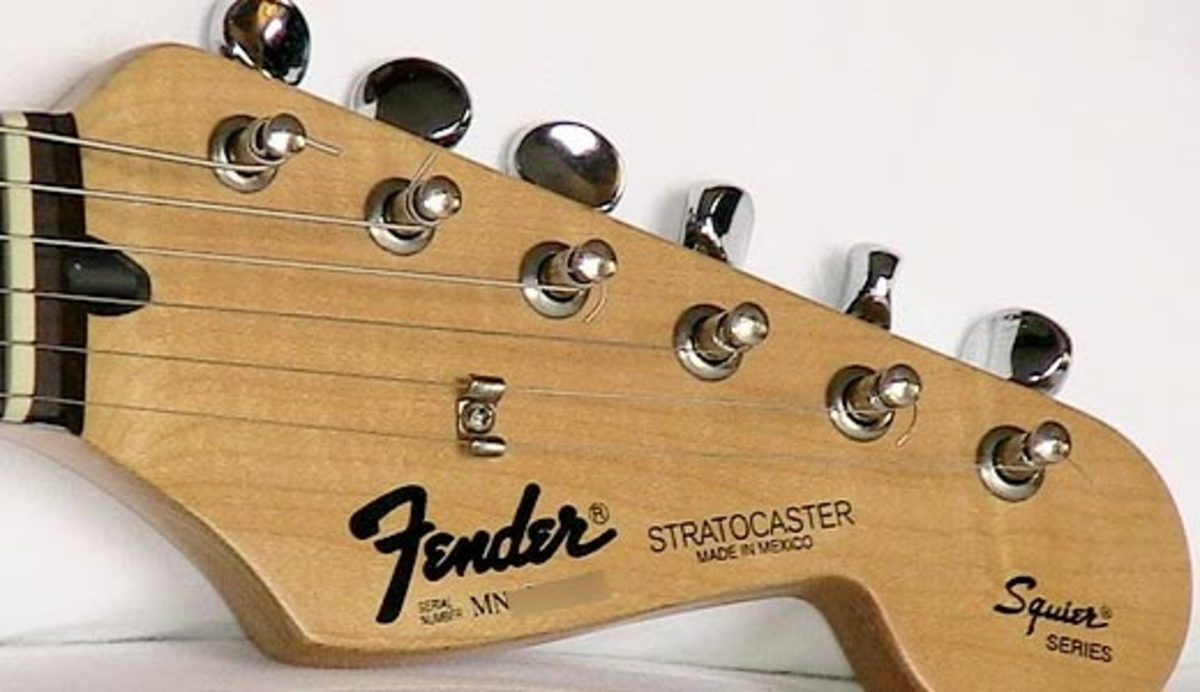How To Play Guitar Chords
Rhythm guitar chords
This article is about using the whole neck of the guitar for playing rhythm guitar chords. It's not for the complete beginner, as it's looking more closely at the chords you might use playing in a band. For more basic chords, try Guitar Chords 101. More basic chords are more appropriate for backing singers with an acoustic guitar, for example, as you want to use fuller-sounding six and five-string chord voicings for this.
In previous hubs we have had a look at harmonised scale theory, which is essential if you want to understand what you're doing on guitar. You have probably recognised that all these chords follow the same pattern, regardless of pitch or key:
- Major (I)
- Minor
- Minor
- Major (IV)
- Major (IV)
- Minor
- m7b5
- Major (I)
Seven different chords, based on the seven different notes of the major scale.
The major scale always follows the same pattern of intervals, and the harmonised scale of chords does that as well. It's the do-re-mi thing.
- On guitar two frets is a tone, one fret is a semitone
- The pattern is T T S T T T S
- Starting with your tonic note, the naming note of the scale, go up 2 frets, then 2 frets, then one fret, etc.
Pattern recognition
This pattern is used all over the guitar neck, on many different sets of strings. Here we are looking at the top three strings only, with the pattern going up the neck. You could describe the shapes as either Dm or D, which might be helpful. As the same shape often repeats in groups of 2, it's easy to get from one chord to another by sliding the shape up and down the neck.
Guitar chords, key of C
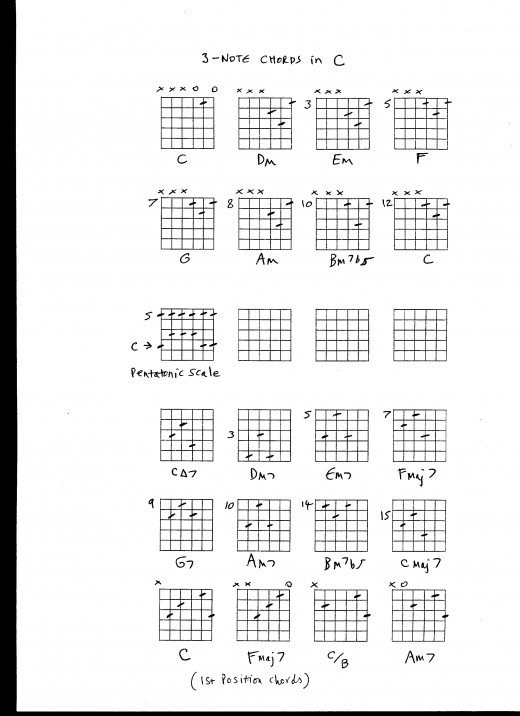
Pentatonic scale
The pentatonic scale pattern shown will fit all the chords in the key of C for improvising and playing lead guitar. This pattern can be extended all over the guitar neck, but this is the most widely used part of the scale. Most guitar solos and lead guitar parts in general are too focused on the use of scales.
As all these chords are diatonic, that is, they only use the notes of the major scale, you can make up good riffs by using arpeggio figures based on the chord shapes. Chordal riffs where you slide from the F to the G chord (frets 5 and 7) will also work well. Jimmy Page used a lot of sliding chord shapes in Stairway To Heaven, for example - and they will work in any song. So, try to integrate some of these chords with the pentatonic scale shown. It's good for improvising, but also for songwriting.
The next set of chords are based on the 5th string root note - C is fret 3 on the 5th string. I have not marked the strings you don't use for the sake of clarity - just use the three notes indicated. These chords have added sevenths, so the first one is C maj7, then Dm7, Em7, Fmaj7, G7, Am7, Bm7b5, Cmaj7. The Cmaj7 chord is often with a triangle sign in chord charts, as shown.
- Notice that all three minor chords use the same shape. If you want to try out some minor ideas, just use these three chords together.
Finally, there are some first position chords that will work well with all the other material. These are the sort of chords you would use for playing to accompany a vocalist if you want a solid and and ringing guitar part. C C/B Am7 F is the chord progression for most of No Woman, No Cry by Bob Marley, and it's used in dozens of songs.

